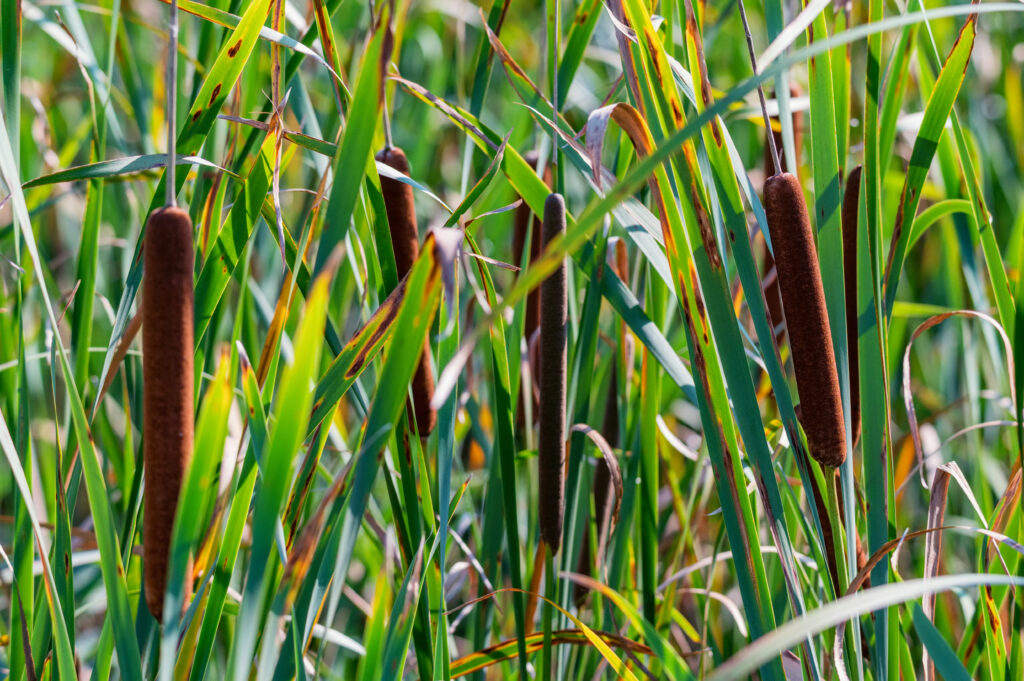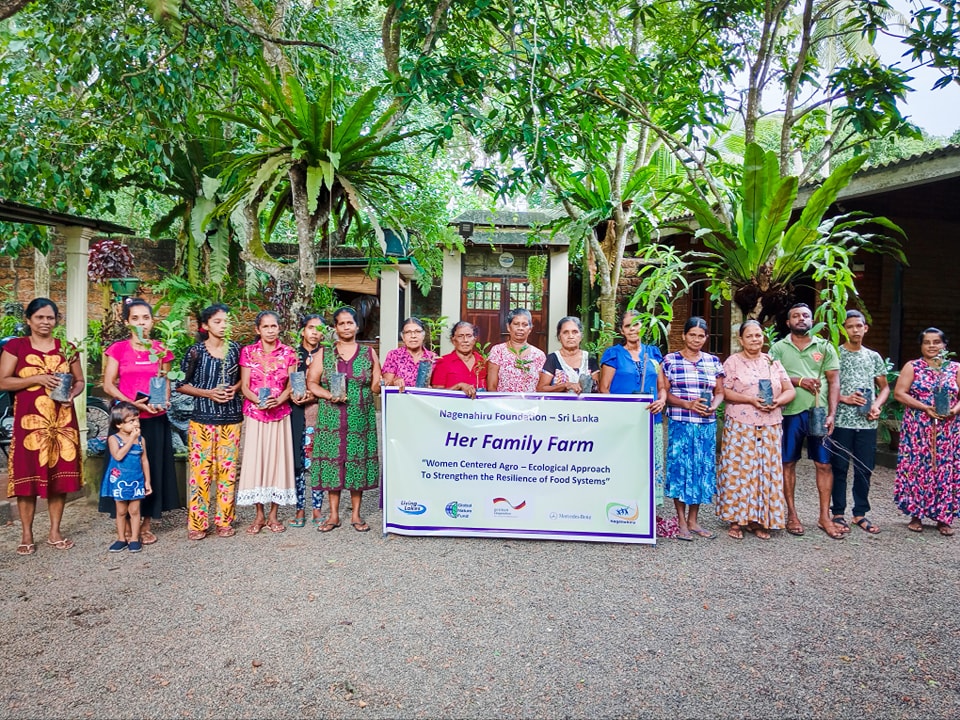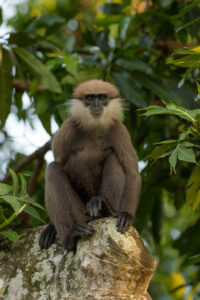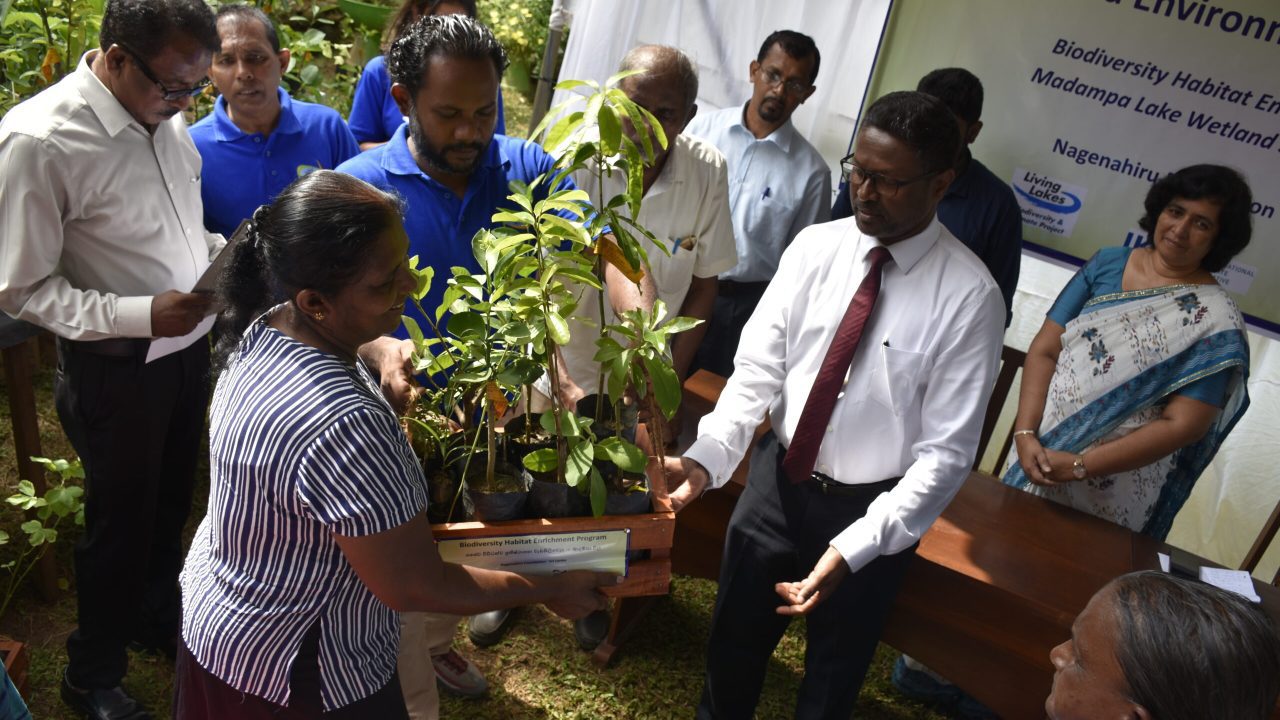Located on the southern coast of Sri Lanka near Ambalangoda, Lake Madampa is not just a serene waterbody but a burgeoning hub of biodiversity. This coastal, brackish water lagoon covers an area of 1.8 km², surrounded by lush mangrove ecosystems. Recognized for its high environmental and socio-economic value, Madampa has been declared a sanctuary. The area comprises mangroves, open water bodies, marshland, adjacent mangrove forests, home gardens, and cinnamon plantations. Home to 264 plant species, including two critically endangered species, and 30% of the total vertebrate fauna of the region, Madampa Lake links with the popular Maduganga Ramsar site to the north.
Fruit Plant Distribution and Biodiversity Initiatives
The recent initiative by the Nagenahiru Foundation under the Living Lakes Biodiversity and Climate Project (LLBCP) aims to enhance the local environment, promote wildlife, and foster community spirit. By distributing fruit plants and establishing butterfly gardens, the project promises to make the scenic beauty and ecological diversity of Lake Madampa more vibrant than ever.
Threats and Challenges to Lake Madampa
Situated next to Ambalangoda, a commercial hub, Lake Madampa faces significant threats from expanding human settlements and urbanization. The growing demand for tourism infrastructure has led to the reclamation of wetland areas. Additionally, the expansion of cinnamon plantations, driven by their high export value, has converted many natural areas. These plantations often use herbicides and other chemicals, polluting the air and depleting butterfly and other insect populations. Invasive species like Annona glabra and Typha angustifolia further threaten the ecosystem by enhancing siltation and converting wetland habitats into terrestrial ones.

Community Engagement and the Role of the Nagenahiru Foundation
The success of this initiative is largely due to the active engagement of local communities and the dedicated efforts of the Nagenahiru Foundation. Nagenahiru coordinated the distribution, planting, and monitoring of fruit plants in the villages of Delduwa, Panianduwa, Thuduwamulla, and Godahena. Before distribution, several awareness sessions were conducted with villagers, and home gardens were assessed through site visits. Based on garden sizes, a list of fruit plants, including mango, avocado, mandarin, papaya, and guava, was prepared. Leaders representing each area ensured reliable communication.

Selected families in Godahena, the closest village to the lake, received vegetable plants like capsicum, chilies, brinjal, tomato, ridged gourd, lady’s finger, winged bean, cucumber, and bitter gourd in addition to fruit plants. The Foundation supervised the implementation of indigenous pest management methods and provided agricultural experts to support organic farming and sustainable pest management practices. Involving children in farming processes ensured knowledge transfer to future generations. This initiative not only provided healthy fruits and vegetables for consumption but also offered additional income from selling surplus produce.
Increasing Pollinator Density through Butterfly Gardens
One of the most enchanting aspects of this project is the creation of butterfly gardens around Lake Madampa. These gardens are meticulously prepared with a variety of plants that serve as food and breeding sources for different species of butterflies. Popular butterfly-friendly plants like Clitoria laurifolia, Bryophyllum pinnatum, Stachytarpheta jamaicensis, and Wattakka volubilis are strategically planted to attract and nourish butterflies. This initiative aims to increase the number of butterflies and other pollinators, enhancing pollination rates as the plants mature.
Monitoring and Sustaining Growth
To ensure the project’s long-term success, the Nagenahiru Foundation implemented a comprehensive monitoring system. Regular check-ups on the health and growth of the trees were conducted, and any issues were promptly addressed. Continuous support and resource people were provided to the villagers, helping them maintain the trees and maximize their benefits. Follow-up workshops and training sessions updated the community on best practices for tree care and sustainable agriculture, ensuring the project’s lasting impact.
Happy Villages and Thriving Communities
The communities around Lake Madampa have wholeheartedly embraced this green initiative. Villagers are enthusiastic about planting fruit trees, knowing that this effort will bring numerous benefits. Families harvest and sell surplus fruits, leading to additional income. Children learn about agriculture and environmental stewardship, ensuring that the benefits of this project are felt for generations to come.
Preserving Biodiversity

By planting a variety of fruit trees around Lake Madampa, the project has significantly contributed to the local ecosystem. Fruit trees provide food sources for various wildlife, including birds, small mammals, and insects. This increased availability of food helps maintain a balanced ecosystem. The endemic Purple-faced Leaf Monkey, which resides a round the lake, benefits from the enhanced food sources as urbanization limits their access to biological corridors.
Additionally, the presence of diverse fruit trees has improved soil quality and reduced erosion around the lake, helping maintain water quality. The project not only preserves indigenous plant species but also provides sustainable livelihood opportunities for the local populace.
Enhancing Climate Resilience and Biodiversity Conservation
The initiatives undertaken by the Nagenahiru Foundation and the Living Lakes Biodiversity and Climate Project have a profound impact on biodiversity and climate resilience in the region. Fruit plants act as carbon sinks, absorbing atmospheric carbon dioxide and mitigating the impacts of climate change. The proliferation of butterfly gardens enhances pollination, bolstering the reproductive success of flowering plants—a critical component of ecosystem resilience. By engaging local communities in conservation efforts, the project fosters a culture of sustainability essential for combating climate challenges.

